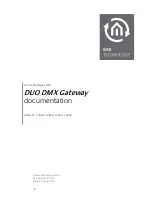
QX5
QXFXO4/QXISDN4/QXE1T1/QXFXS24; (SW Version 6.0.x)
149
QXFXO4/QXISDN4/QXE1T1/QXFXS24 Manual II: Administrator’s Guide
Software PBX
- a telephone system that converges voice and data on an industry-standard computing platform and uses computer telephony components
that conform to industry standards. Since they conform to industry standards, software PBXs are interoperable with third-party systems and CT
components. Conformance also allows software PBXs to run third-party enhanced applications such as desktop call control, graphical voice mail,
automatic call distribution (ACD), IP gateways, follow-me call forwarding, unified messaging, and CRM integration.
Speed Calling
- a service that allows making a personal address book for every QX user. A simple digit combination can be assigned to any destination
phone number.
T
Transfer
- a service giving a possibility to readdress incoming calls. Call Transfer can be conditional (with consultation) and unconditional (without
consultation).
Transmission Control Protocol (TCP)
- a connection-oriented transport layer protocol that provides reliable full-duplex data transmission. TCP is part
of the TCP/IP protocol stack.
Transmission Control Protocol/Internet Protocol (TCP/IP) -
is a networking protocol that provides communication across interconnected networks,
between computers with diverse hardware architectures and various operating systems.
Trunk: -
is
a communications channel between two points, typically referring to large-bandwidth telephone channels between switching centers that
handle many simultaneous voice and data signals.
Trunk Level 1 (T1)
- a high-speed (1.544Mb/s) digital telephone line with the equivalent of 24 individual 64Kb/s channels that are joined via time
division multiplexing. A T1 line can be used to transmit voice or data, and many are used to provide connections to the Internet. T1 is the North American
equivalent of an E1 line.
U
UDP
- a connectionless transport layer protocol in the TCP/IP protocol stack. UDP is a simple protocol that exchanges datagram without
acknowledgments or guaranteed delivery, requiring that error processing and retransmission be handled by other protocols.
Universal Serial Bus (USB)
- is an interface with a protocol that is designed to handle a broad range of devices - telephones, modems, printers, etc.
Upstream-
in communications, there are two circuits - one coming toward you and the other going away from you. Upstream is another term for the name
of the channel going away from you.
URL
- an identifier used to locate content that is transported via the HTTP protocol.
Username
- identification name of the user. Usually used for registration and login.
V
VCI
- parameter used to configure ATM settings and is usually given by the Internet provider.
Virtual Private Network (VPN)
- connects two local networks (intranets) over the insecure Internet securely. VPN routers manage authentication
between servers and clients and handle data encryption for the connection. Only authorized users can access the network and the data exchange cannot be
intercepted. A VPN includes authentication and encryption to protect data integrity and confidentiality. VPNs are “virtual” in the sense that individuals can
use the public Internet as a means of securely accessing an internal network. Once the VPN connection is established, users have access to the same
network resources, addresses, and so forth as if they were connected locally. VPNs are “private” because the data is encrypted between two VPN gateways.
Encryption makes it very difficult for anyone to intercept data and capture sensitive information such as passwords.
Voice mail
- a brief message that external users can leave for the QX users in the event that nobody answers the call.
Voice Mail System (VMS)
- a feature providing the possibility of leaving brief voice messages at the unavailable or busy QX extension’s mailbox.
Voice mailbox
-is the mailbox where voice mails are collected.
Voice message -
help messages that are played to the user giving a hint on how to manipulate the menus within QX using the phone handset.
Voice Over Internet Protocol (VOIP) -
technology used to transmit voice conversations over a data network using the Internet Protocol. This provides
ability to carry normal telephony-style voice over an IP-based internet with POTS-like functionality, reliability, and voice quality.
VPI
- parameter used to configure ATM settings usually given by the Internet provider.
W
Wide Area Network (WAN) -
a communications network used to connect computers and other devices across a large area.



































